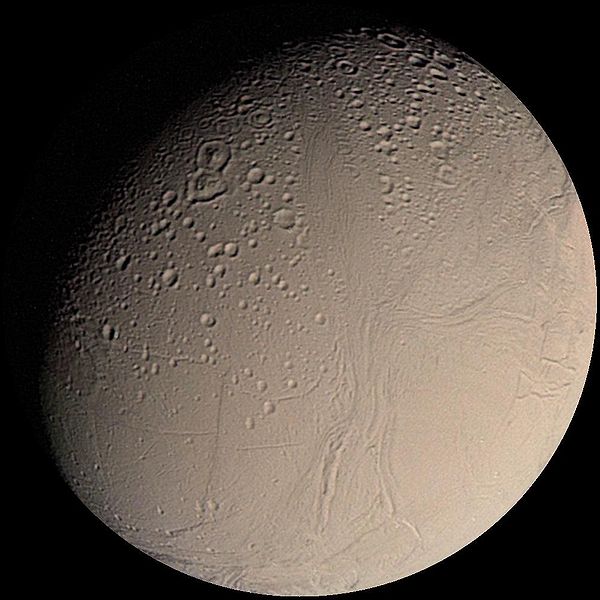پەڕگە:Enceladus from Voyager.jpg

قەبارەی ئەم پێشبینینە: ٦٠٠ لە ٦٠٠ پیکسەڵ. ڕێزەلووشنەکانی تر: ٢٤٠ لە ٢٤٠ پیکسەڵ | ٤٨٠ لە ٤٨٠ پیکسەڵ | ١٬٠٠٤ لە ١٬٠٠٤ پیکسەڵ.
پەڕگەی سەرەکی (١٬٠٠٤ × ١٬٠٠٤ پیکسڵ، قەبارەی پەڕگە: ٩٣ کیلۆبایت، جۆری ئێم ئای ئێم ئی: image/jpeg)
مێژووی پەڕگە
کرتە بکە لەسەر یەکێک لە ڕێکەوت/کاتەکان بۆ بینینی پەڕگەکە بەو شێوەی لەو کاتەدا بووە.
| ڕێکەوت/کات | ھێما | ئەندازە | بەکارھێنەر | تێبینی | |
|---|---|---|---|---|---|
| هەنووکە | ١١:٢٠، ١٧ی ئازاری ٢٠٠٥ |  | ١٬٠٠٤ لە ١٬٠٠٤ (٩٣ کیلۆبایت) | Bricktop | NASA image |
بەکارھێنانی پەڕگە
ئەم پەڕەی 2ە ئەم پەڕگەیە بەکار دەھێنێت:
بەکارھێنانی سەرانسەریی پەڕگە
ئەم ویکیانەی دیکەی خوارەوەش ئەم پەڕگە بەکاردێنن:
- بەکارھێنان لە af.wikipedia.org
- بەکارھێنان لە ar.wikipedia.org
- بەکارھێنان لە ast.wikipedia.org
- بەکارھێنان لە azb.wikipedia.org
- بەکارھێنان لە ba.wikipedia.org
- بەکارھێنان لە beta.wikiversity.org
- بەکارھێنان لە be.wikipedia.org
- بەکارھێنان لە bg.wikipedia.org
- بەکارھێنان لە ca.wikipedia.org
- بەکارھێنان لە ca.wikinews.org
- بەکارھێنان لە co.wikipedia.org
- بەکارھێنان لە cy.wikipedia.org
- بەکارھێنان لە da.wikipedia.org
- بەکارھێنان لە de.wikipedia.org
- بەکارھێنان لە de.wikibooks.org
- بەکارھێنان لە de.wikinews.org
- بەکارھێنان لە de.wiktionary.org
- بەکارھێنان لە el.wikipedia.org
- بەکارھێنان لە en.wikipedia.org
بینینی بەکارھێنانی گشتی زیاتری ئەم پەڕگەیە.

